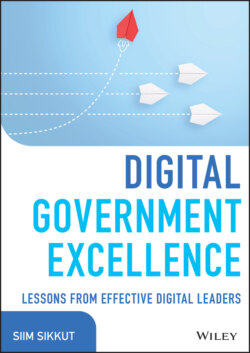Читать книгу Digital Government Excellence - Siim Sikkut - Страница 56
Tell a Bit More on the Skunkworks Approach—How Did That Working Method Really Work?
ОглавлениеTo get these projects off the ground, we usually did one or two meetings a week for the first month. My chief of staff was always amazing at keeping action items, at keeping people's feet to the fire on them, and keeping people honest about them. Once proper cadence and routine emerged with the concrete Skunkworks project lead, we would maybe meet weekly, then maybe once every two weeks. If I felt that the work was falling off the rails, then we would get back into twice-weekly mode.
The meetings were stand-up, half an hour each time, rapid fire or blitzing it, going very specific. The people who were working these projects were delighted that the CIO was giving them all the attention. It also kept them on their toes: we just talked, another meet was coming, you have to be ready and bring in your new work. So, the need for follow-through was not just from me, it had to be from everybody. My direct reports also worked hard to get their teams ready for these briefings, but they also watched out to not to get in the way for them.
In the meetings, I asked mainly, “What is in the way right now?” Meaning, what prevented the team from moving ahead? We might bring then someone in for the next meeting to get it fixed or decided. Like if the issue was privacy, we would have a privacy analyst along for the next meet and make a decision there and then to move things forward. I think a lot of civil servants are not necessarily used to making decisions on the spot. We did it; the team then told the deadline for the next step and had to update me by that time. With the hierarchy gone, delivery was that much faster.
Of course, as the CIO you cannot work this way for everything because you will lose your mind. That is why you got to be pretty astute about what you pick to be your Skunkworks to make a difference.
